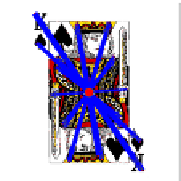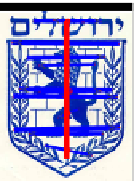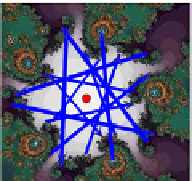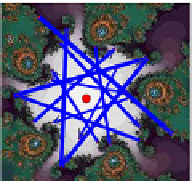Information Technology Reference
In-Depth Information
(a)
(b)
(c)
(d)
(e)
(f)
Fig. 16
More results on synthetic images
lar structure with a longer side along the
Y
axis. We use all vertices and build a
fully connected weighted graph and affinity matrix. The eigenvalues are shown in
Fig. 15a, revealing four self-alignments. The first, corresponding to
λ
1
is the identity
transform, while the alignment derived from
2
isshowninFig.15bandconveys
a 180
◦
rotation of the whole object in parallel to
X
ψ
Y
plane, about the base of the
object. The SSA recovers two additional reflectional symmetries, corresponding to
ψ
−
4
. Those are depicted in Figs. 15c-15d. The plane of reflection is drawn in
blue and intersects the object.
3
and
ψ
5.4
Implementation Issues
The SSA algorithm is fast, spending most of its time calculating descriptors for
the local features and computing the eigendecomposition of the affinity matrix
H
. For images with thousands of local descriptors, the affinity matrix can reach
a size of 20000
20000, but since local appearance information is applied to
reject non-possible correspondences in advance, the affinity matrix is very sparse
×
∼
99%. The sparseness of the affinity matrix alleviates both the memory requirements
and the computational complexity of the eigendecomposition. We
implemented the SSA in Matlab and computed the local descriptors using the pre-
compiled binary compute descriptors made available courtesy of the VGG group
(http://www.robots.ox.ac.uk/˜vgg/research/affine/descriptors.html). Typical running










Search WWH ::

Custom Search